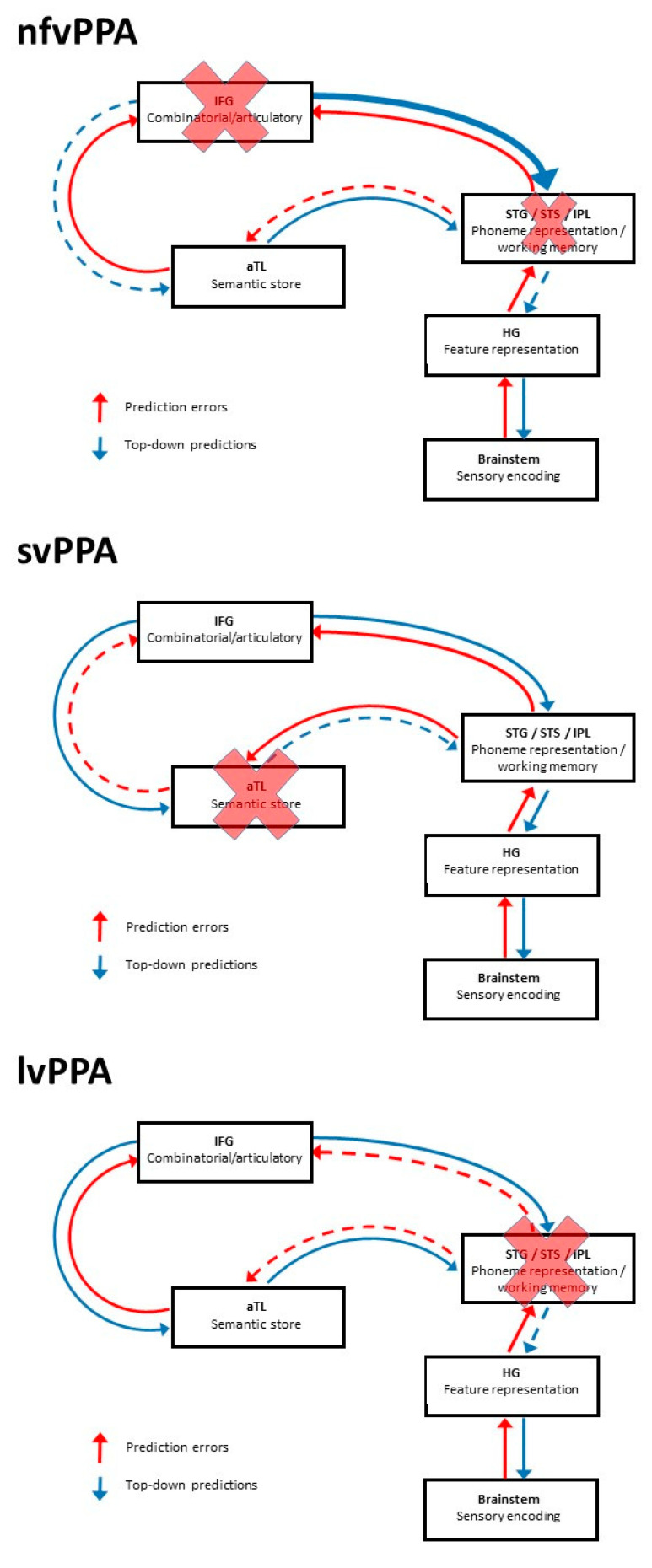Figure 3.
A simplified model of predictive coding of degraded speech processing in primary progressive aphasia (PPA), referenced to the healthy brain presented in Figure 1. The three major PPA variant syndromes—nonfluent/agrammatic variant PPA (top panel); semantic variant PPA (middle panel) and logopenic variant PPA (bottom panel)—are each associated with a specific pattern of regional brain atrophy and/or dysfunction that is critical to the degraded speech processing network, implying that different PPA subtypes may be associated with specific profiles of degraded speech processing (see text for details). Boxes indicate processors that instantiate core speech decoding functions (see Figure 1), and arrows indicate their connections in the predictive coding framework, with the putative direction of information flow. In the case of nfvPPA, the emboldened descending arrow from IFG to STG signifies aberrantly increased precision of inflexible top-down priors (after Cope and Colleagues [93]), to date the most secure evidence for a predictive coding mechanism in the PPA spectrum; the status of the IPL locus in this syndrome is more tentative. Implicit in the model is the hypothesis that neurodegenerative pathologies will tend to disrupt stored neural templates (“priors”) and “prune” projections from heavily involved, higher order association cortical areas due to neuronal dropout (promoting inflexible top-down predictions), but also degrade the fidelity of signal traffic through sensory cortices (reducing sensory precision and promoting over-precise prediction errors) [15]. The relative prominence of these mechanisms will depend on the macro-network and local neural circuit anatomy of particular neurodegenerative pathologies. Proposed major loci of disruption caused by each PPA variant are indicated with crosses; dashed arrows arising from these damaged modules indicate disrupted information flow. aTL, anterior temporal lobe; HG, Heschl’s gyrus; IFG, inferior frontal gyrus; IPL, inferior parietal lobule; lvPPA, logopenic variant primary progressive aphasia; nfvPPA, non-fluent variant primary progressive aphasia; STG superior temporal gyrus; STS, superior temporal sulcus; svPPA, semantic variant primary progressive aphasia.

